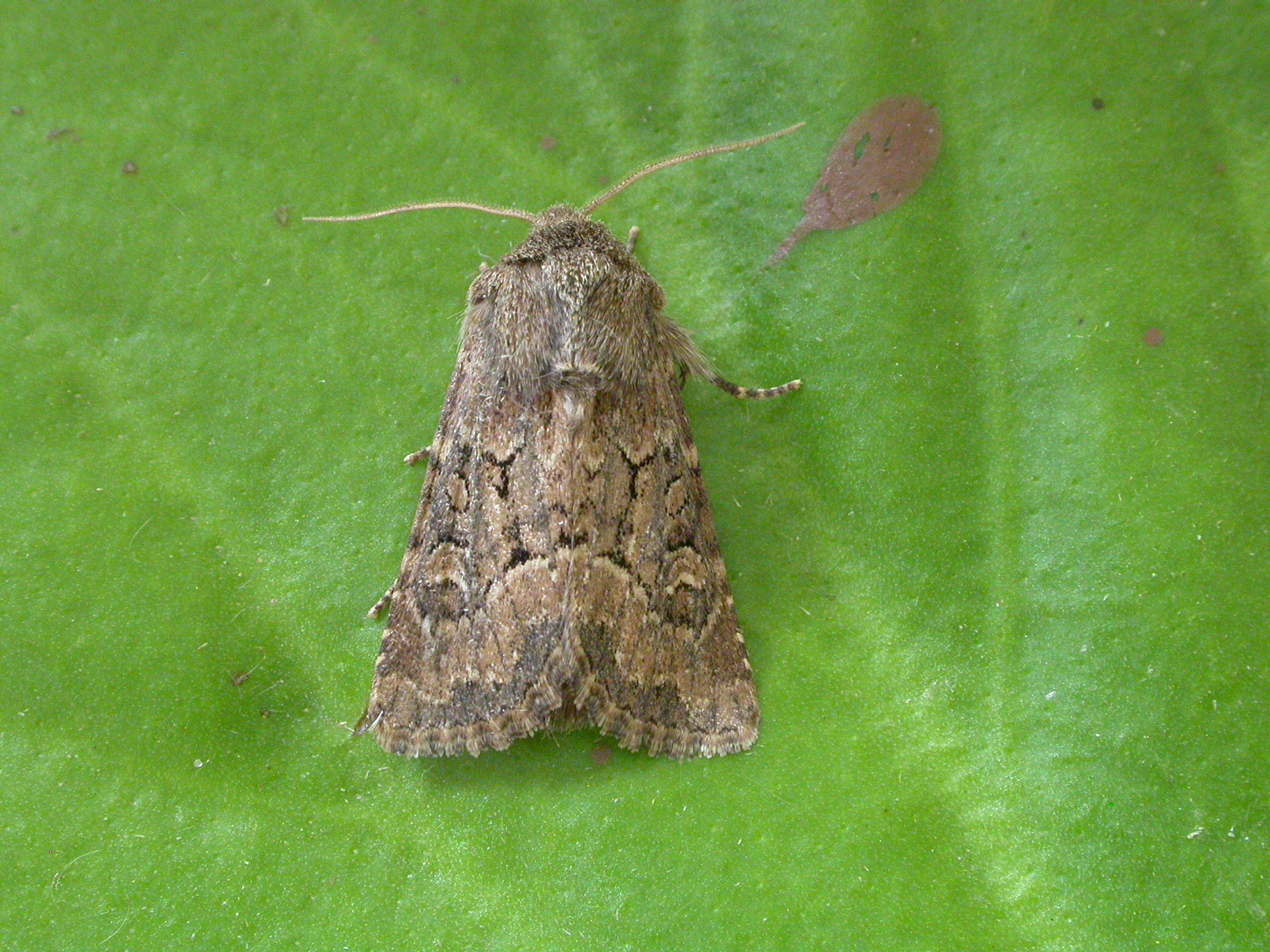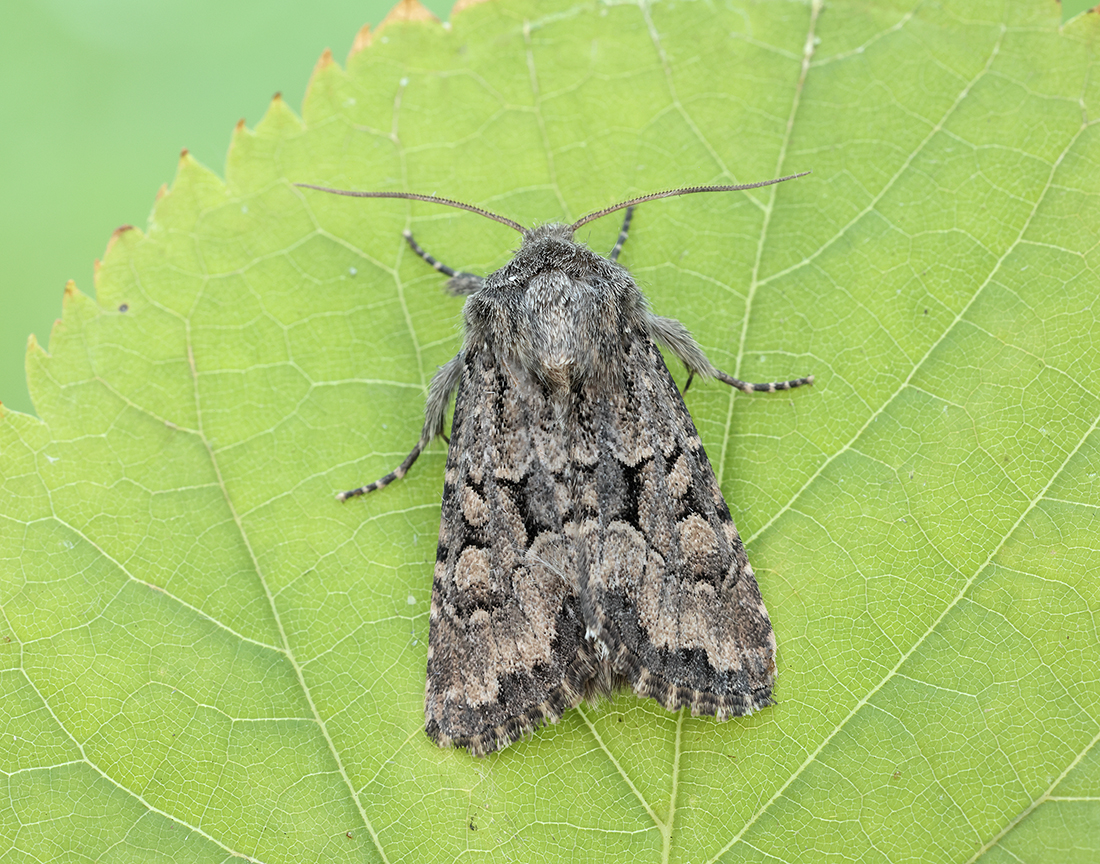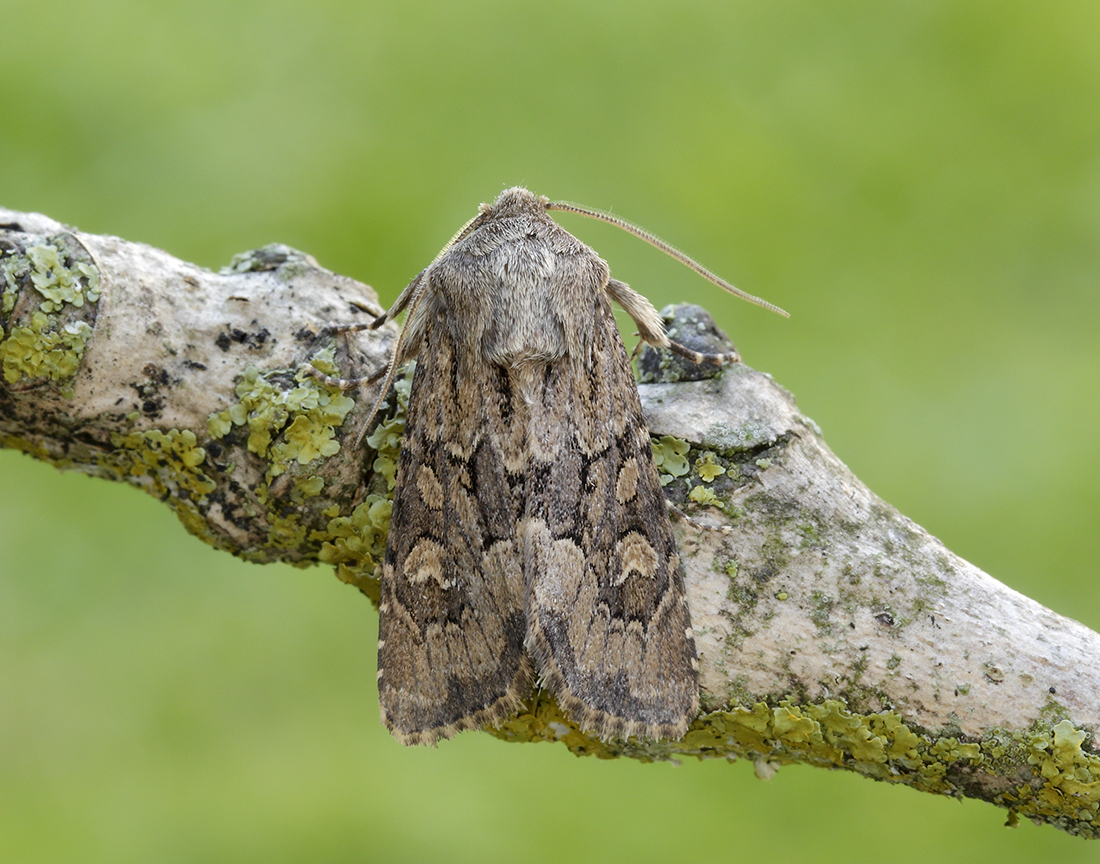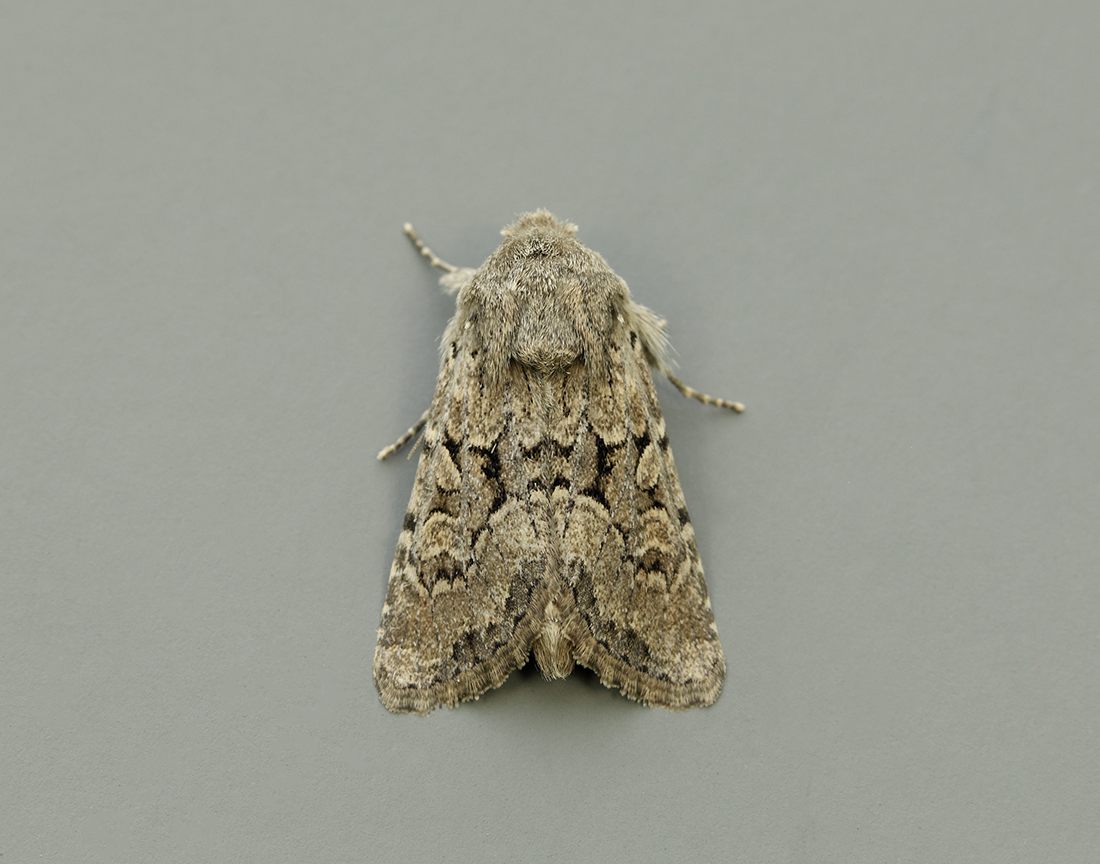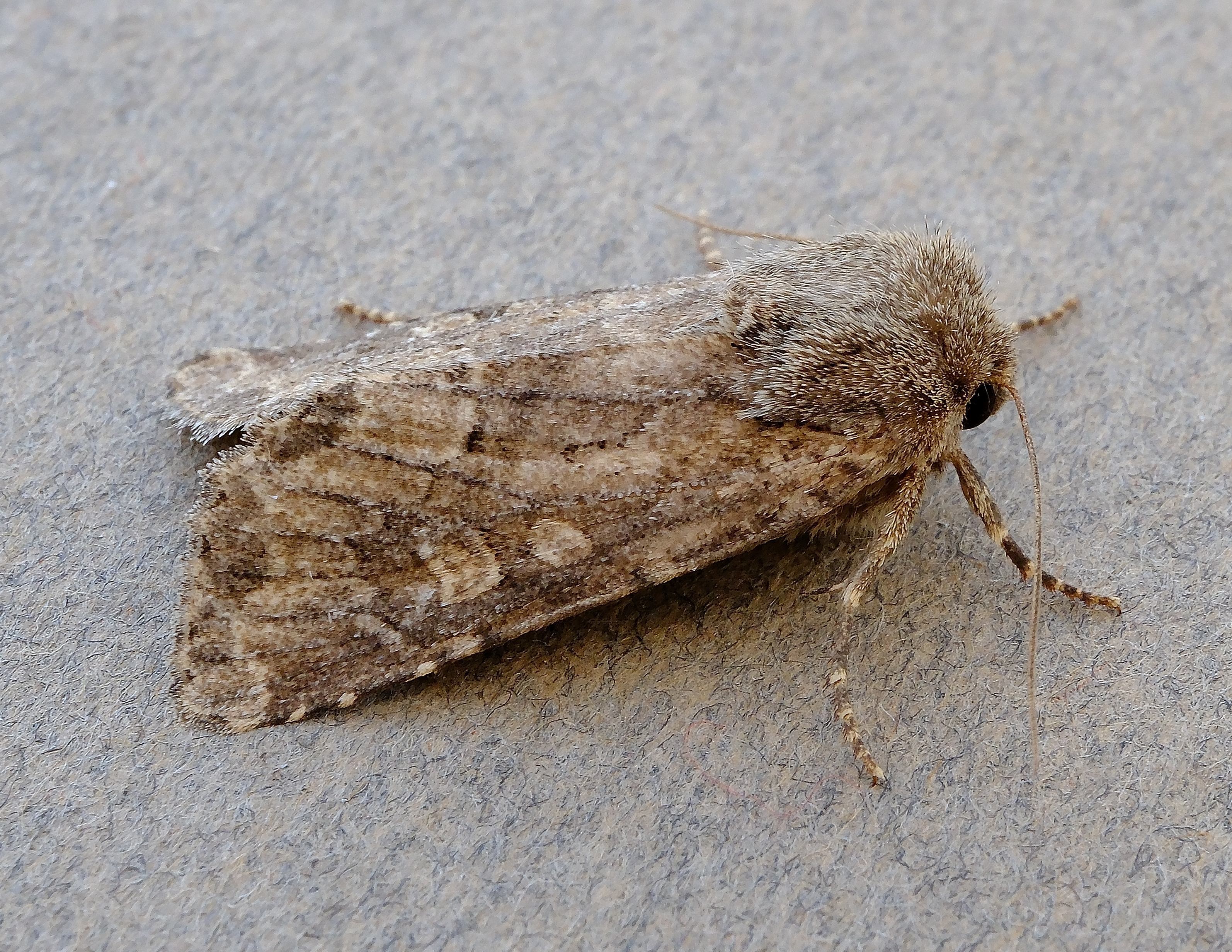Identification
Quite distinctive with coarse-textured forewing.
Recording Method.
Attracted to light.
Life cycle
One generation. Overwinters as a larva, during September to June, where it lives among the roots of the foodplant, where pupation also takes place.
Larval foodplants
Grasses, including Common Couch and fescues.
Habitat
A wide variety of habitats including coastal sand-dunes, cliffs, woodland rides and grassy places.
History
Somerville (1858) on a visit to the Moffat area recorded this species in August of that year. Lennon (1863) had found it at Kirkconnell, whilst Douglas-Robinson found it to be common in August on Almorness. Buchanan White of Perth (1895) listed it as occurring in Colvend and Southwick parishes (VC73). However, Gordon (1913) had never observed it until 1898 when a few were taken at light in August at Corsemalzie (VC74). D. A. Mowat, keeper at Killantribgan Lighthouse sent a handful of specimens to William Evans in August, 1914 to assist with his Scottish lighthouse survey.
Sir Arthur Duncan (1909-84) also found it at Tynron and Castlehill, Dumfries during his lifetime. During 1974-93 all seven Rothamsted stations recorded it many times. From 1992 to 2010, the regular trapped sites at Kirkton and Durisdeer (VC72), Mersehead RSPB, Cally Woods and Old Torr (VC73) recorded it many times, proving it to be one of our commonest noctuids.




